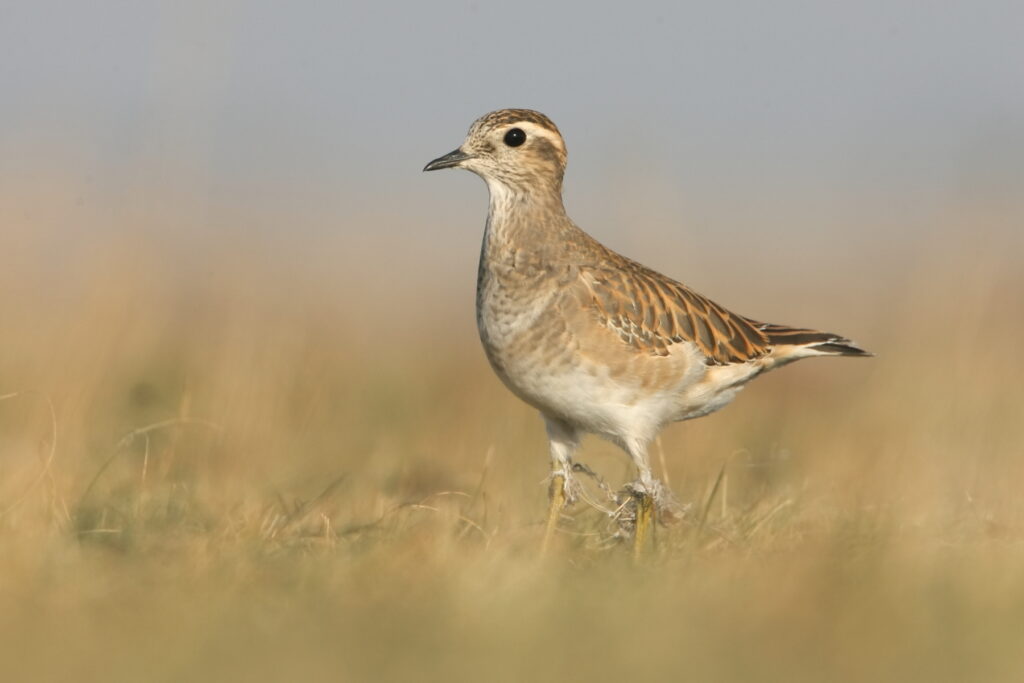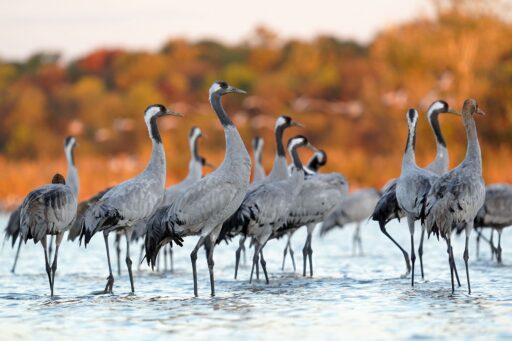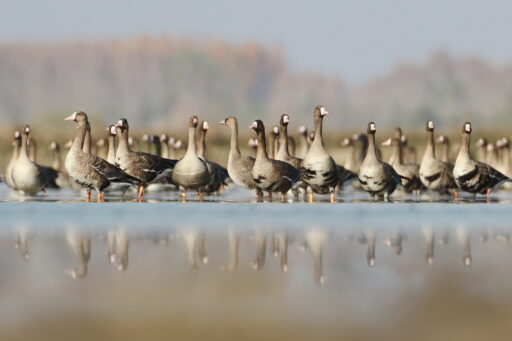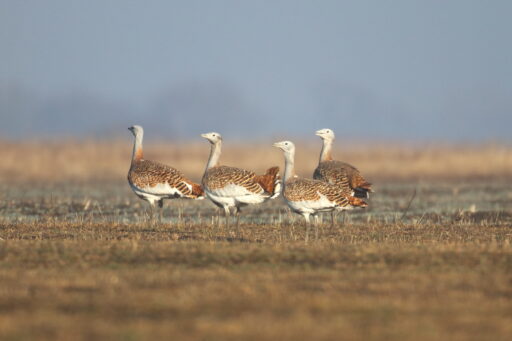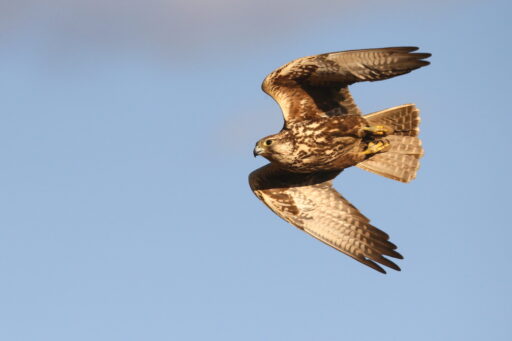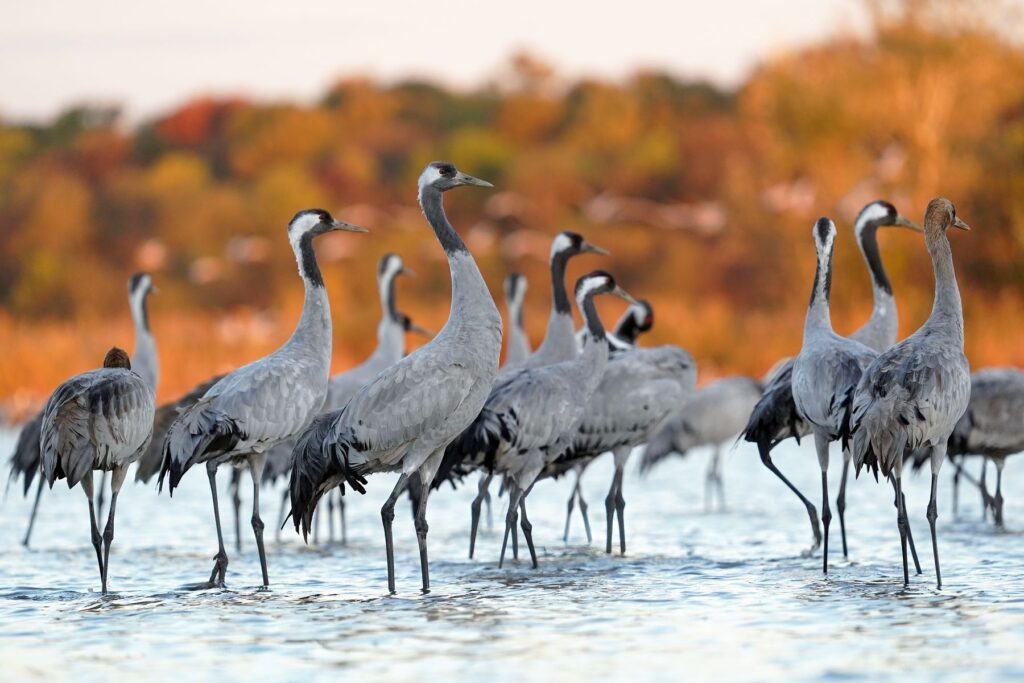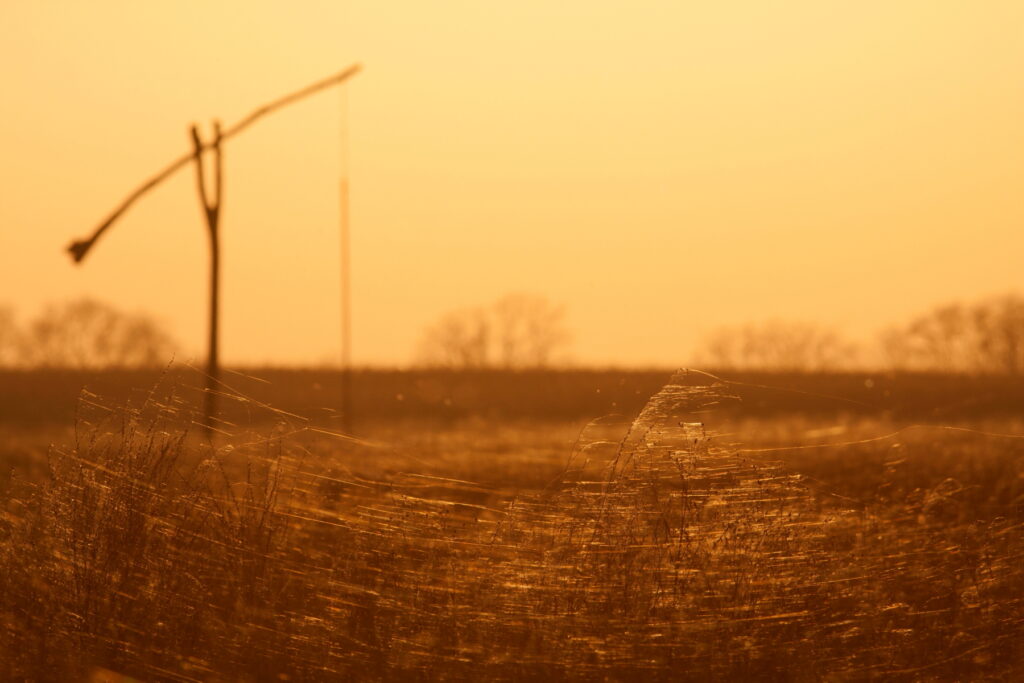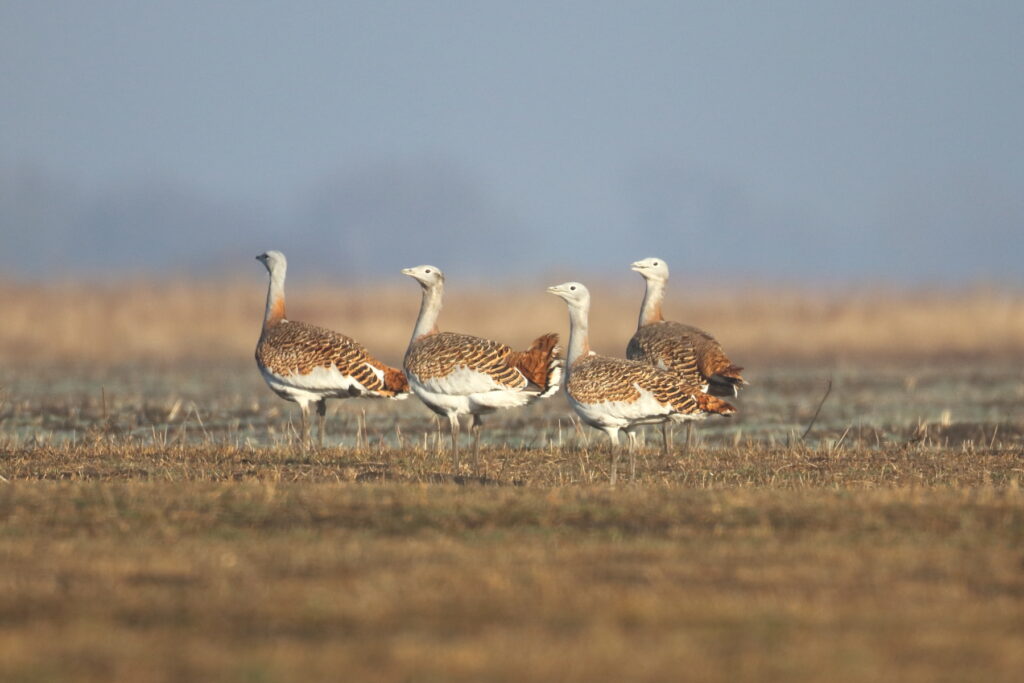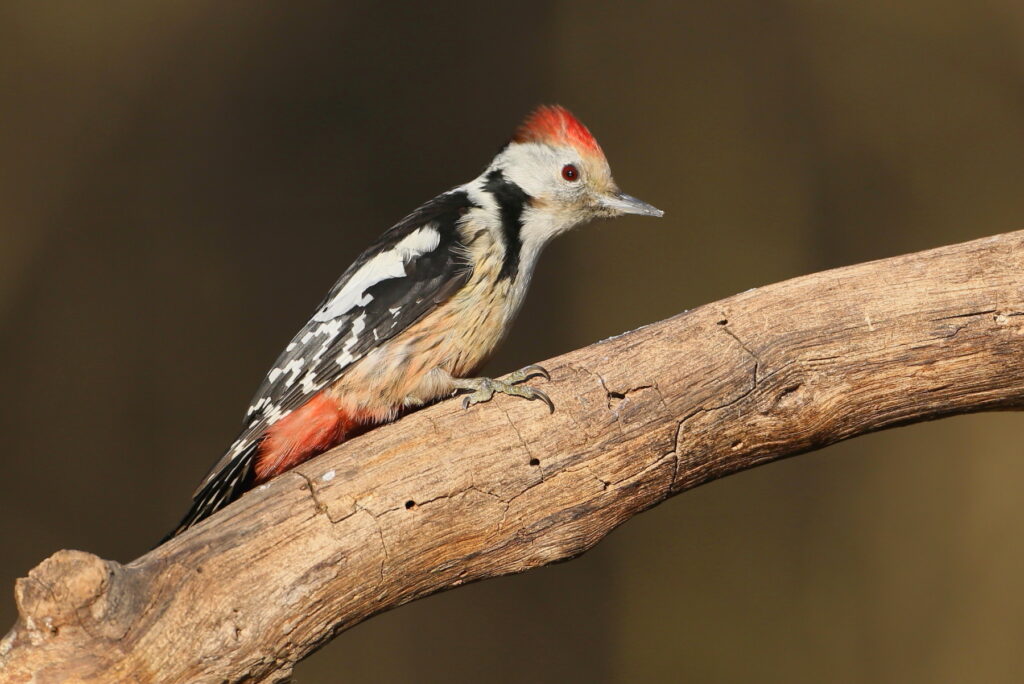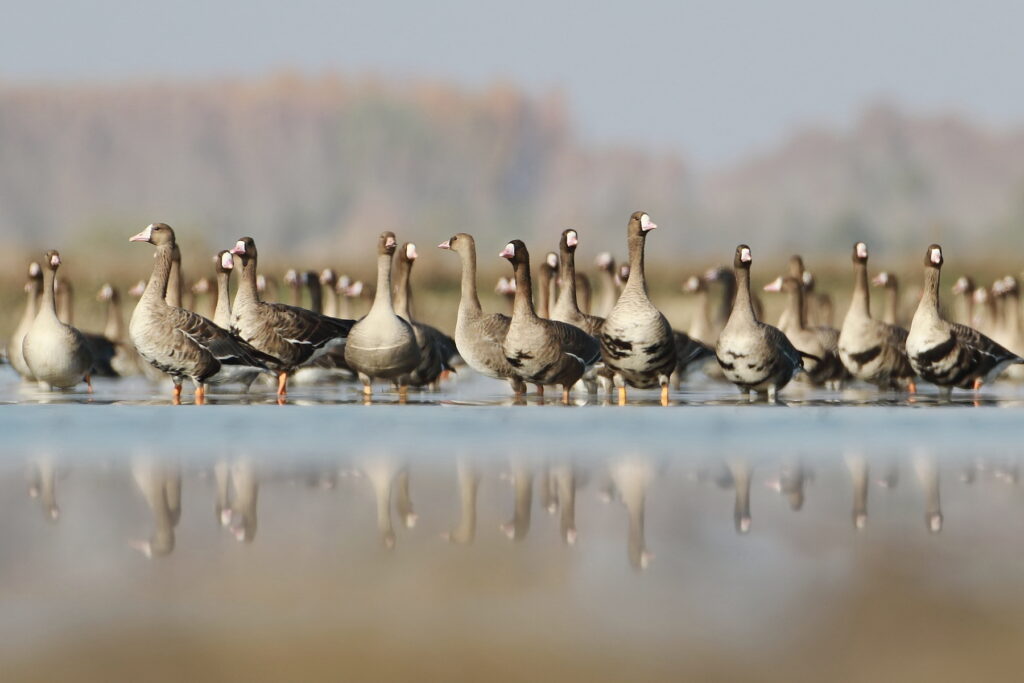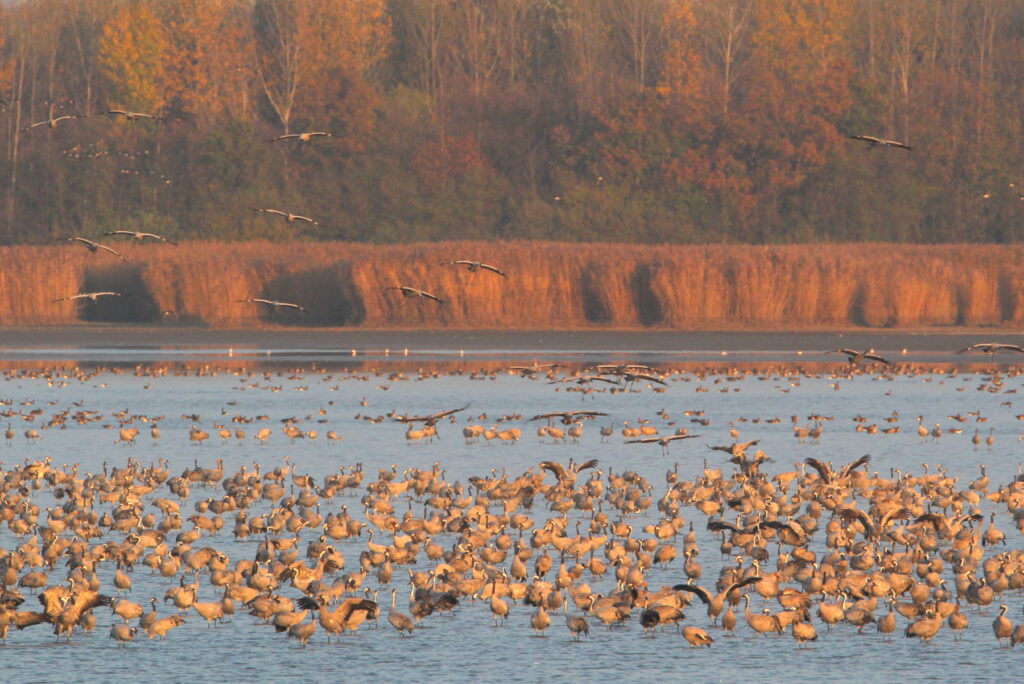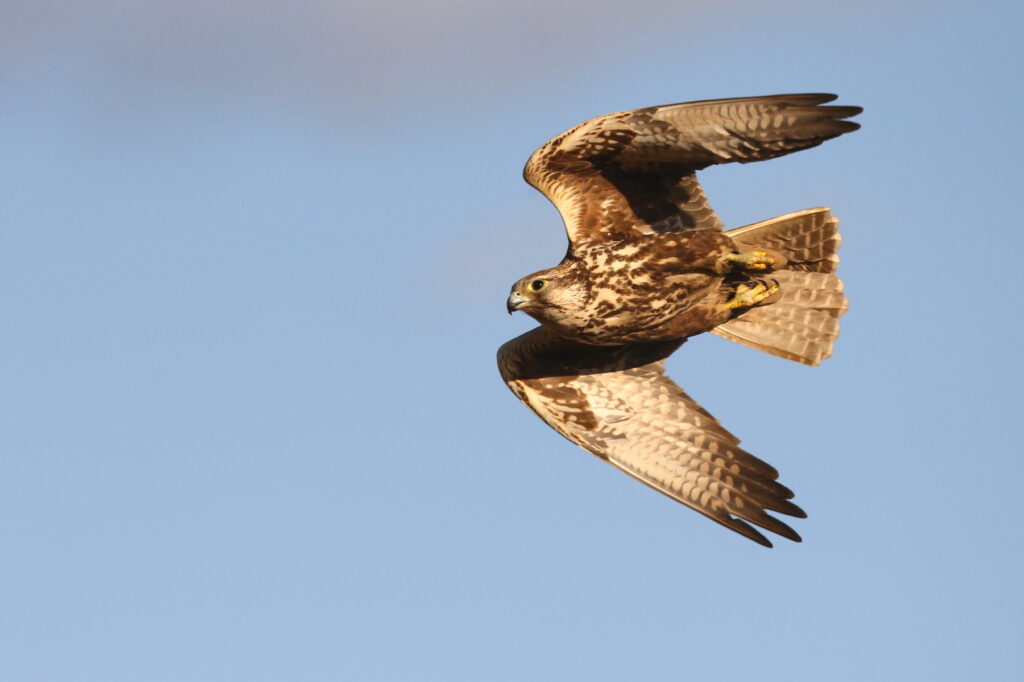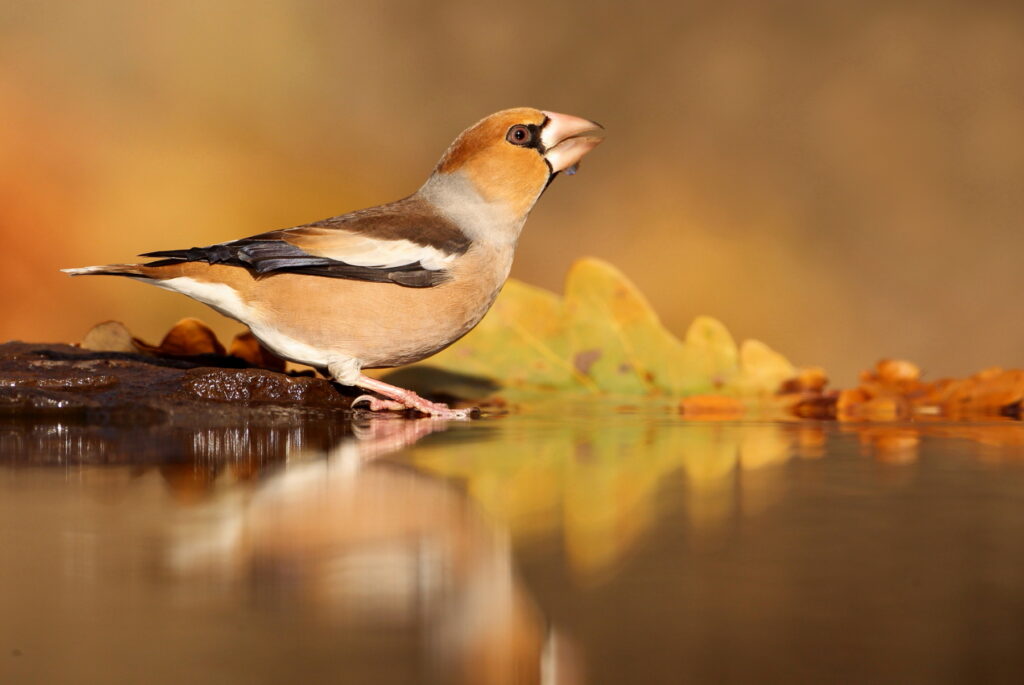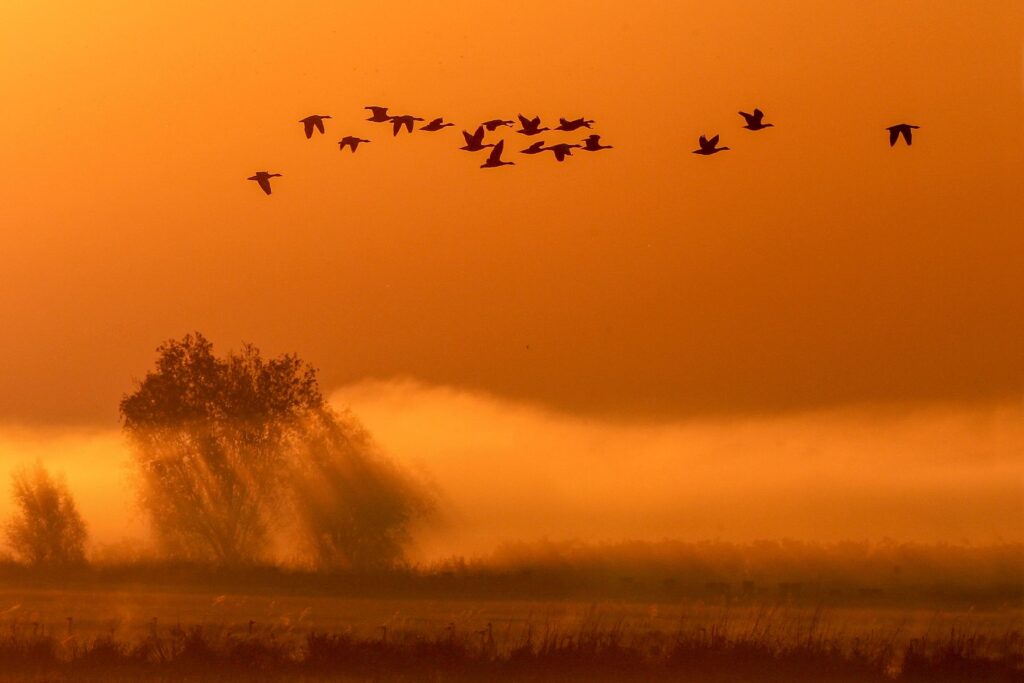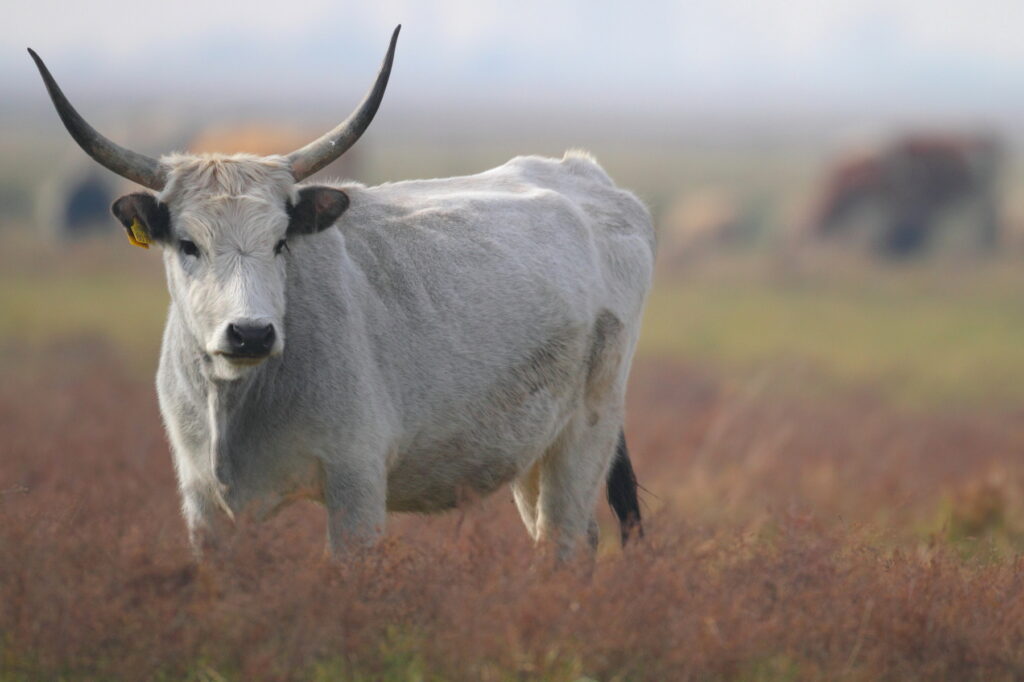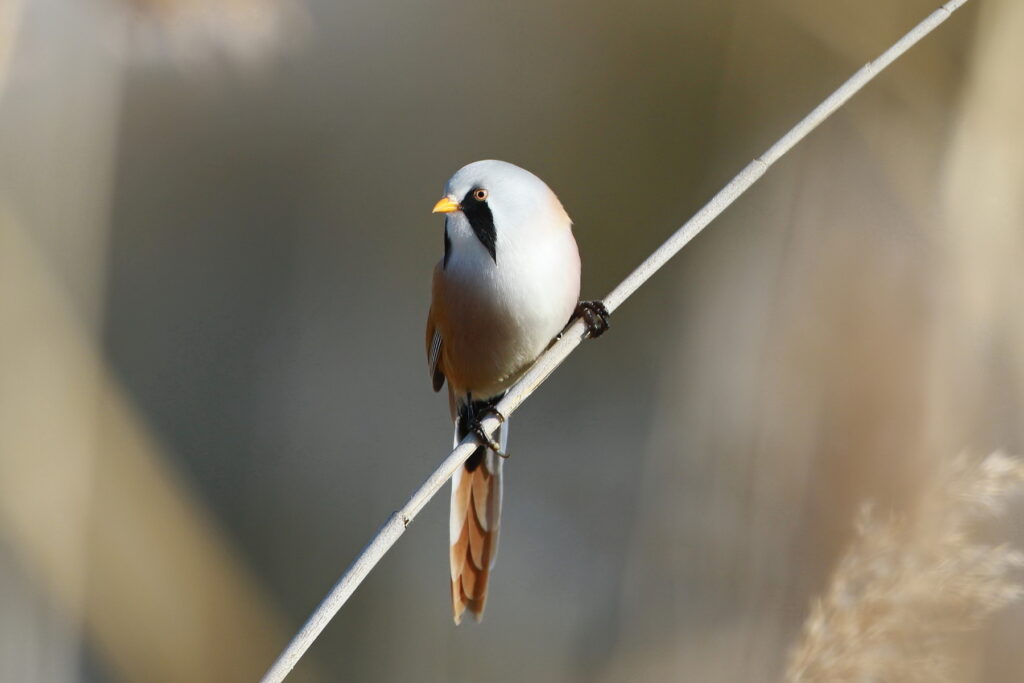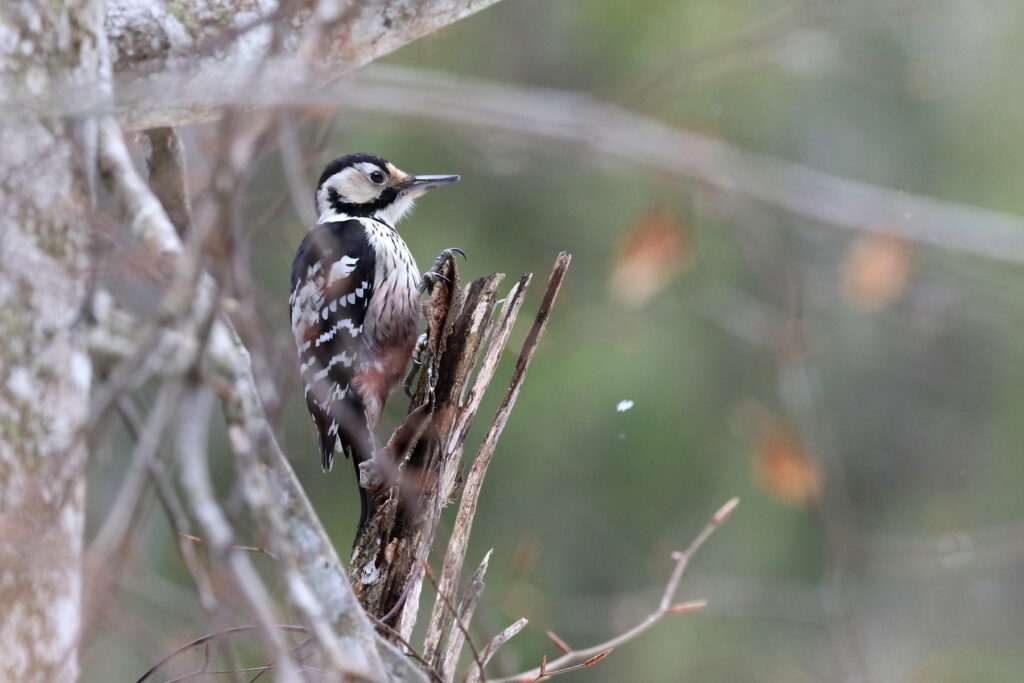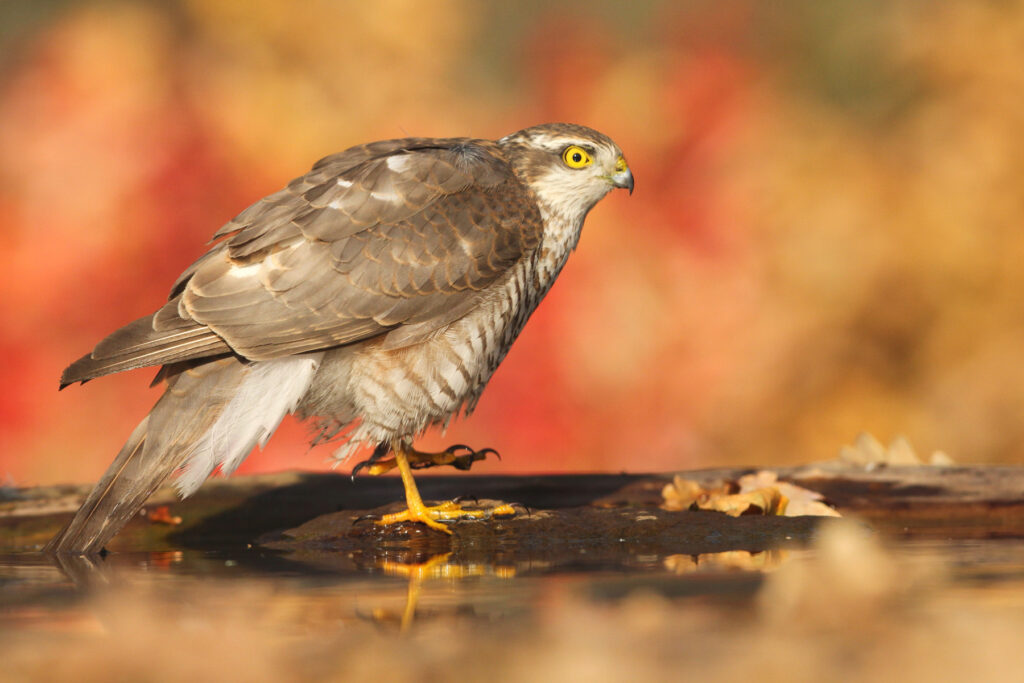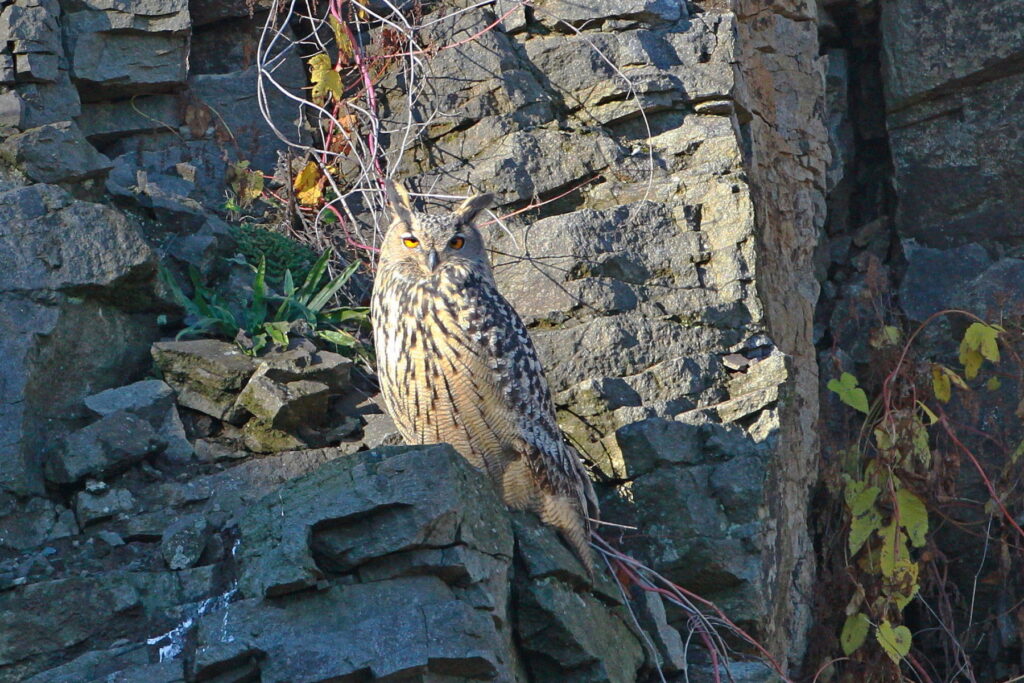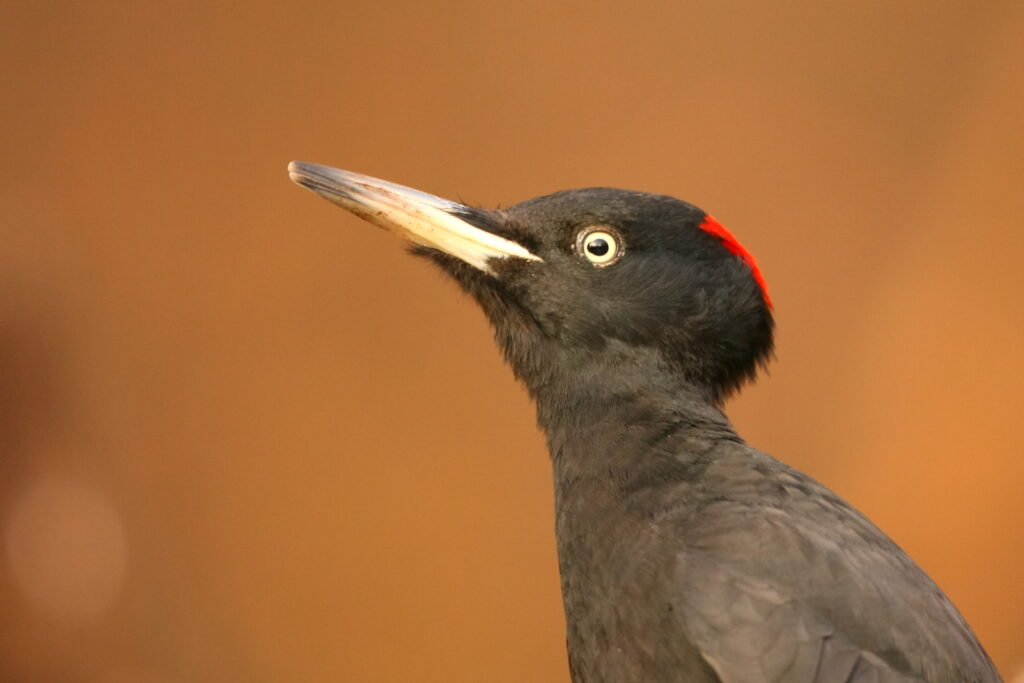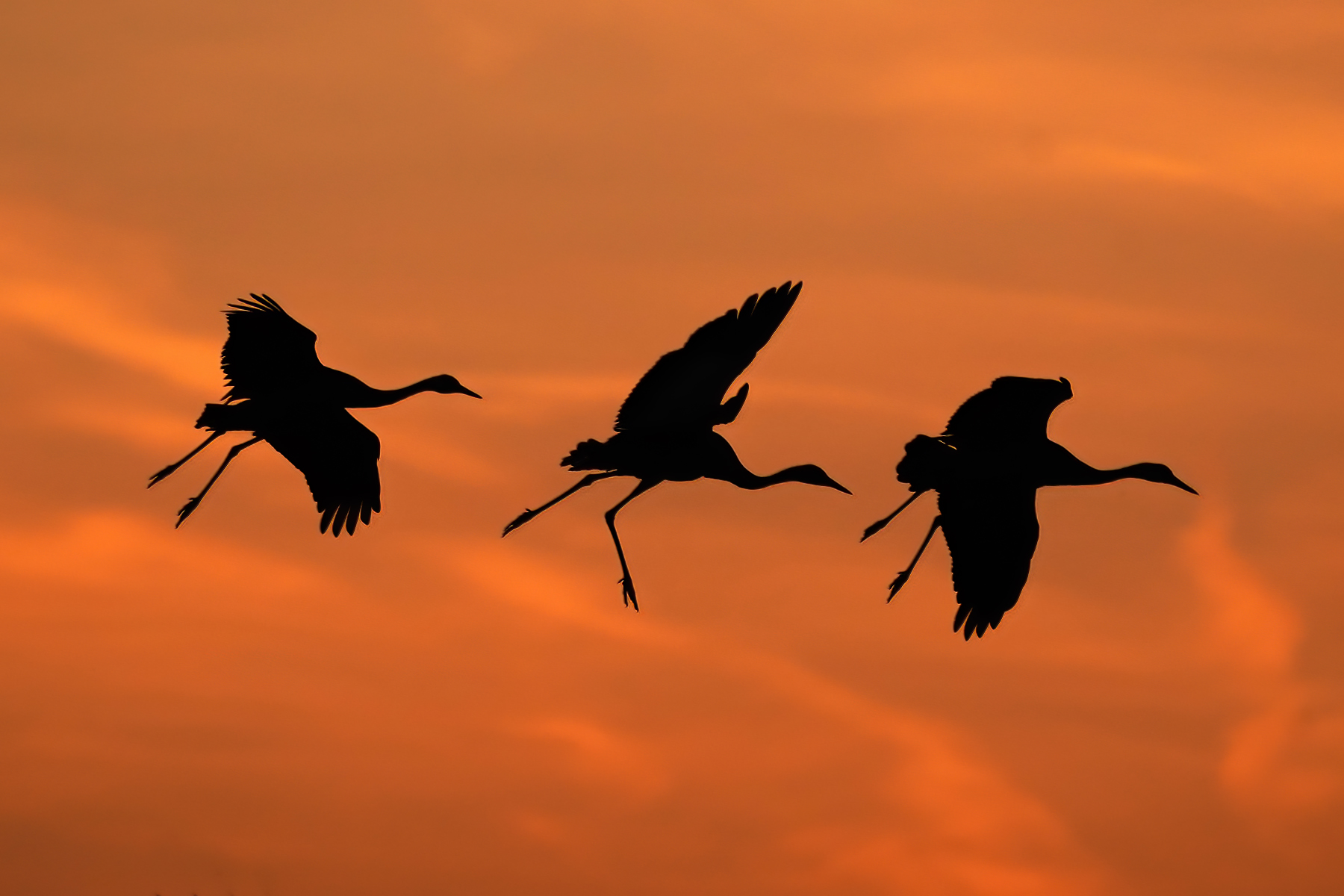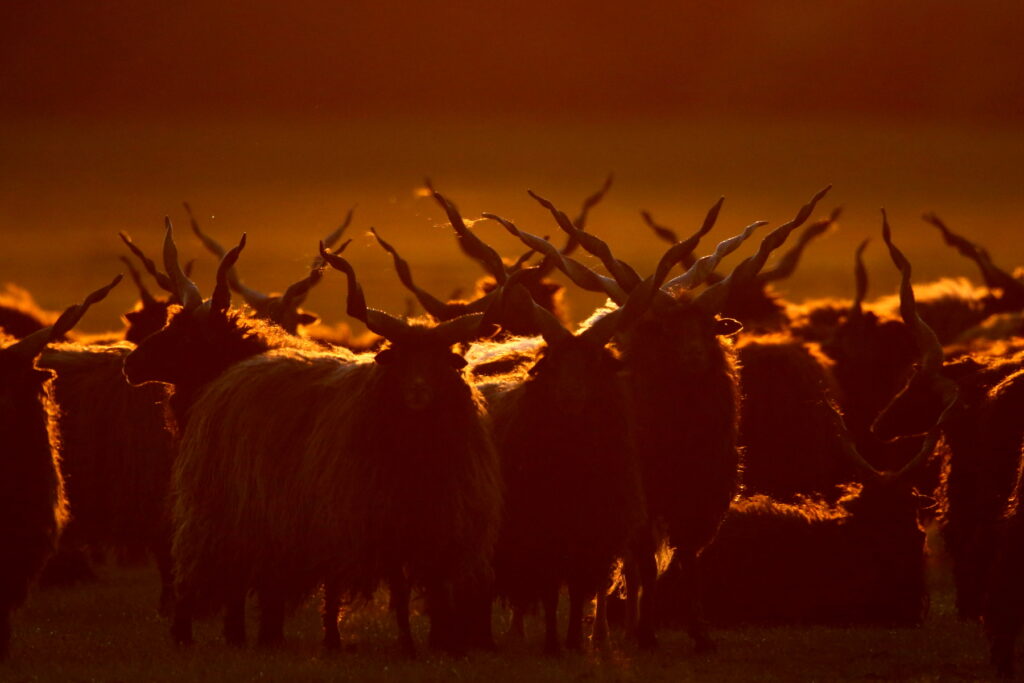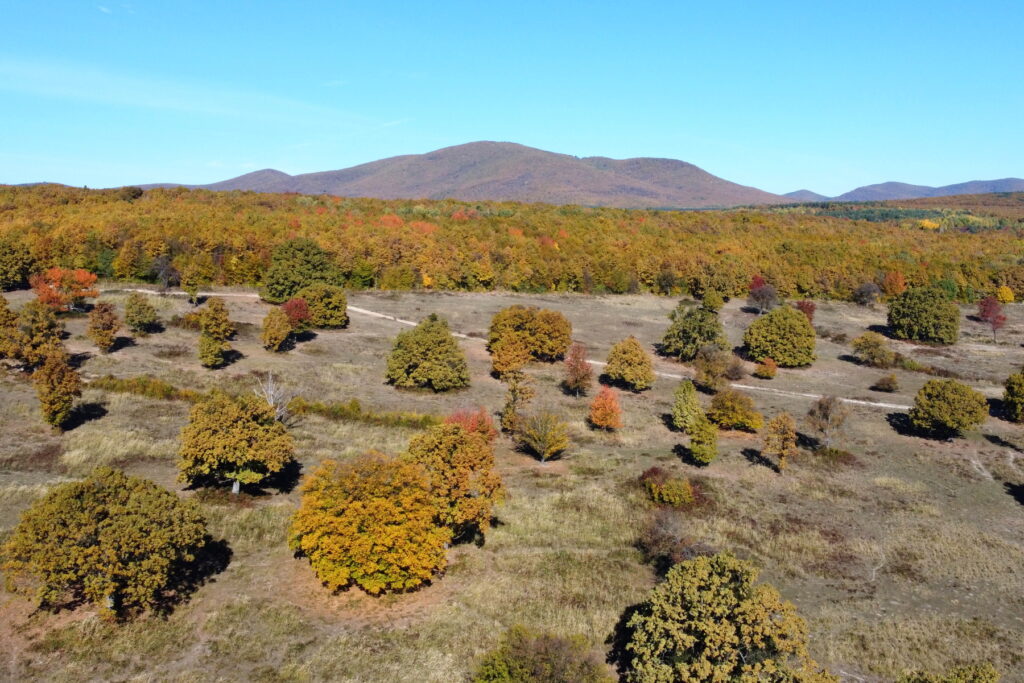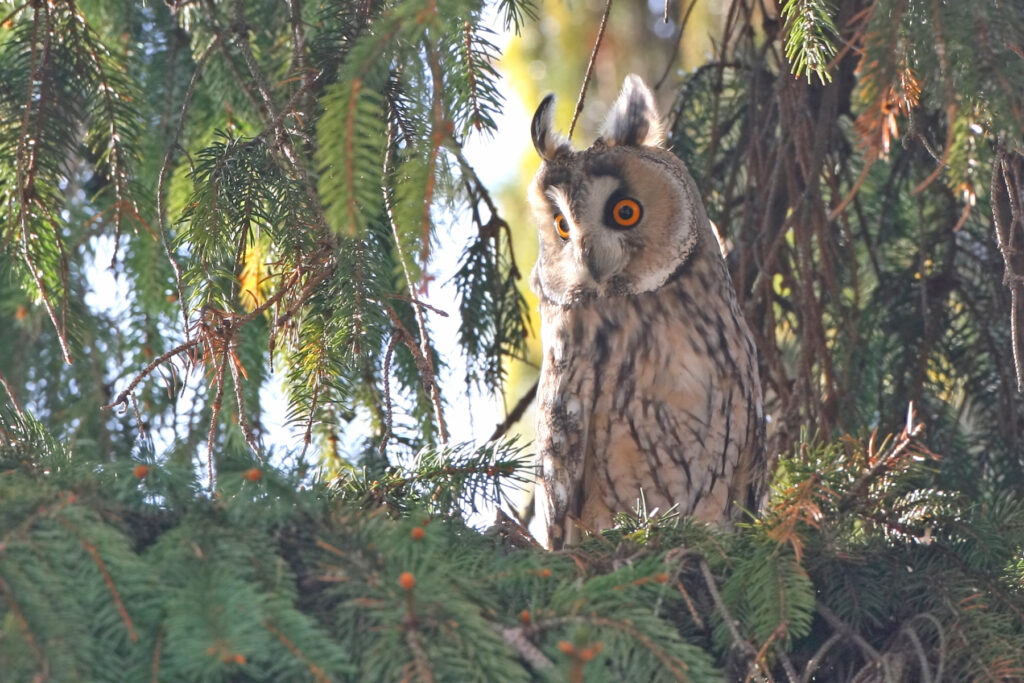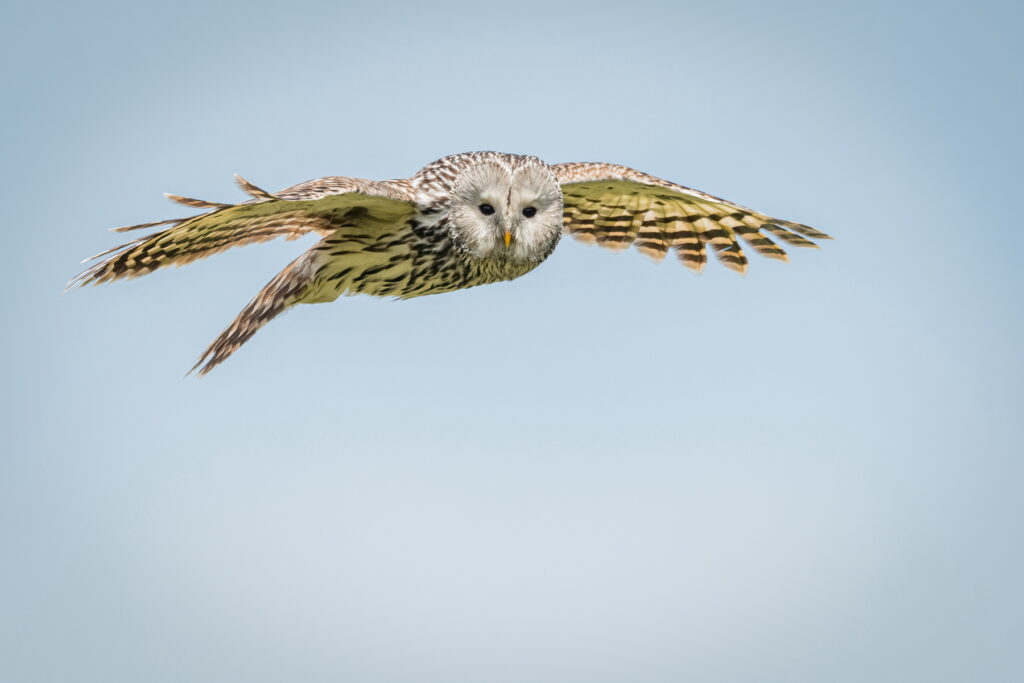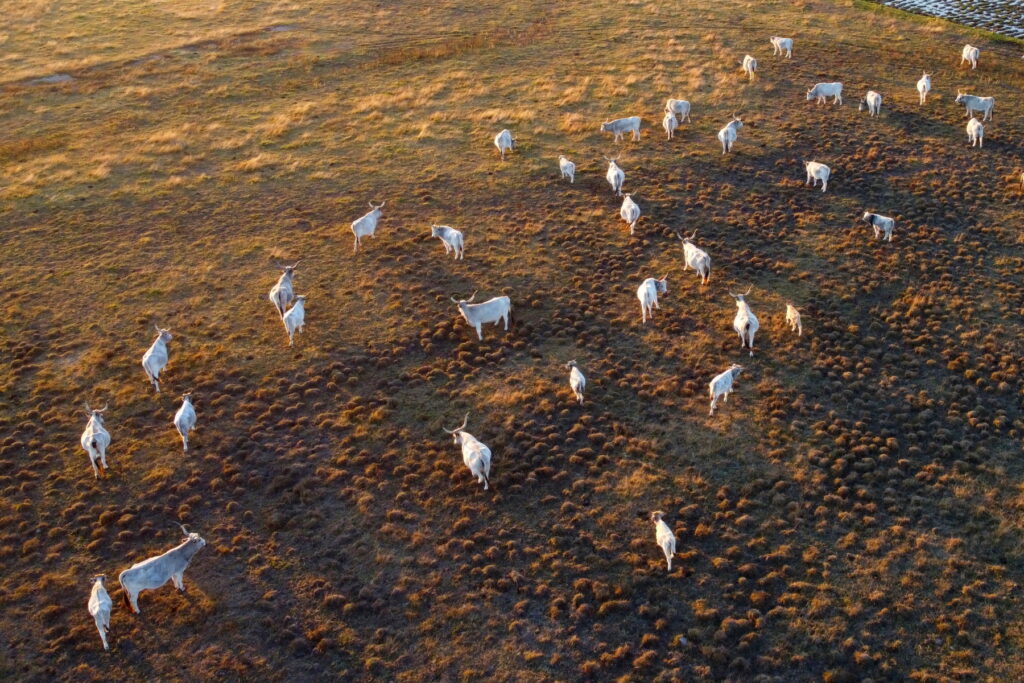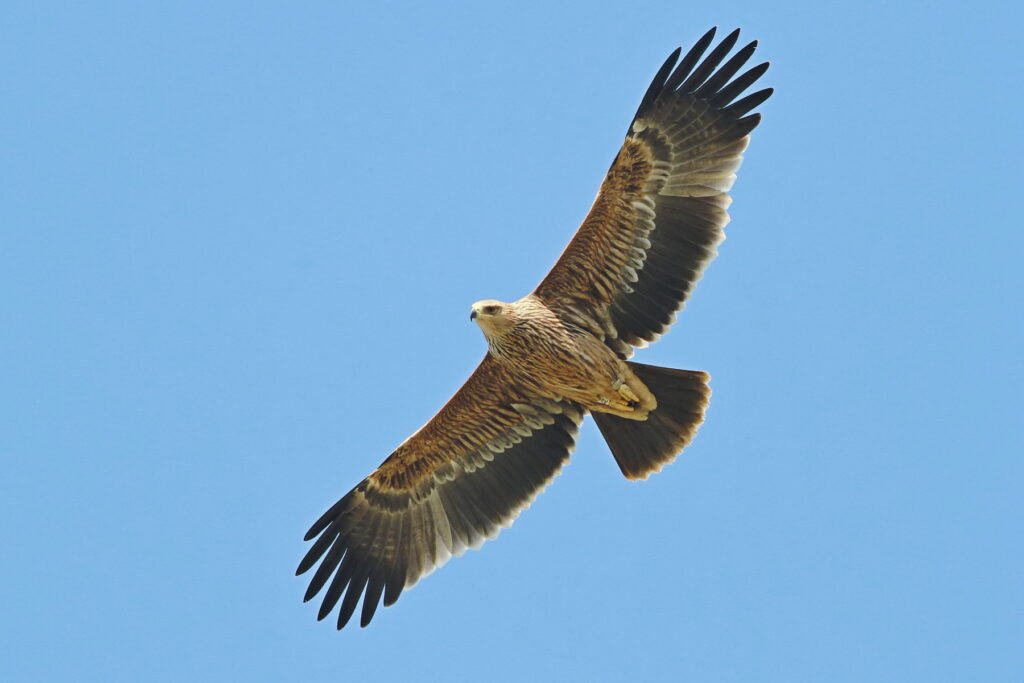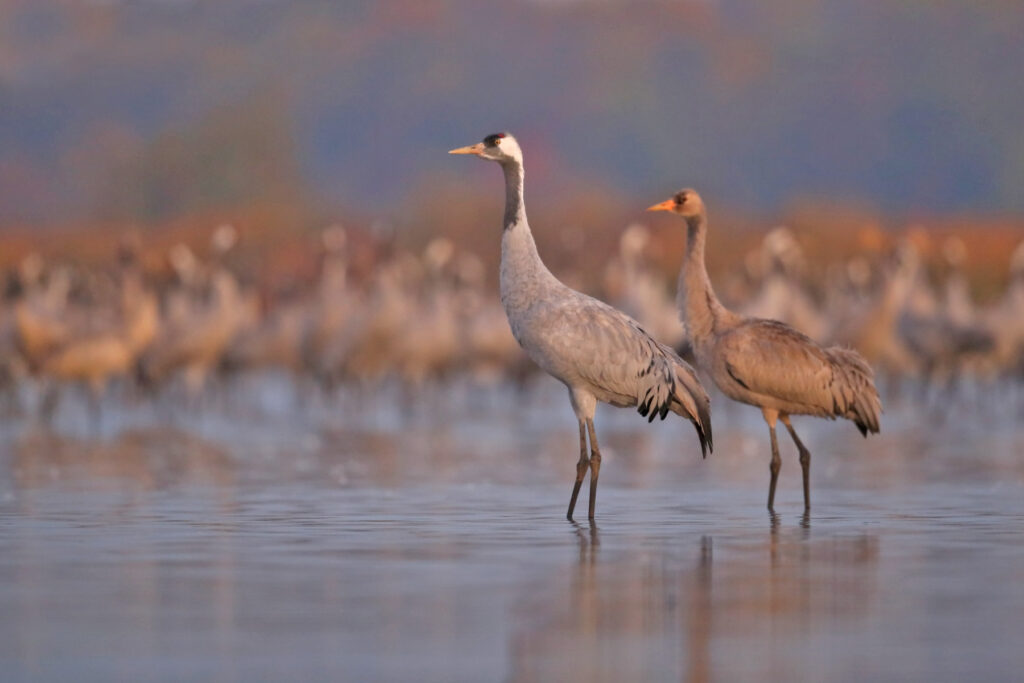Tour information
TOP TARGETS:
1) Tens of thousands of Common Cranes
2) Great Bustard
3) Eurasian Dotterel
4) Eastern Imperial Eagle
5) Saker Falcon
6) Ural Owl
7) Eagle Owl
8) Black Woodpecker
9) White-backed Woodpecker
10) Rarities
Tour starting and ending time: It is important to book your flight according to the official starting and ending times of the tour! Our bus and guide will be waiting all participants in the Liszt Ferenc Airport at Budapest. Please make sure you can reach the starting point in time at 14:00 on the tour starting date! If you wish to arrive earlier to Budapest our office can help you to book accommodation and logistics. However if you arrive early you need to make your way to the airport for the meeting time. In some cases we can pick up clients from the nearby airport hotels (please check with our office). Also very important that the tour only ends at 17:00 on the last day so please do not book flights out of Budapest earlier than 19:00 on the last day!
The tour: A seven day holiday to eastern Hungary, focusing on the spectacular autumn migration of cranes through the Hortobágy as well as Eastern Imperial Eagle, Saker and Great Bustard plus Ural and Eurasian Eagle Owls and 8 species of woodpeckers in the Zemplén Hills.
Locations to be visited: Zemplén Forest Reserve with the World Heritage Tokaj Wine Region (2nts) and the World Heritage Hortobágy National Park (4nts). We usually start in the Hortobágy area but this can change according to the latest bird news!
Group Size: The tour is guaranteed departure from 3 participants upwards with a maximum group size of 10 participants plus Sakertour leader.
Accommodation: Comfortable rural accommodation with great birding right outside the hotels in the Hortobágy area (4 nts), and the Zemplén area (2 nts). All rooms en suite.
Meals: All included in the price. The food is good! Breakfast and dinner at the hotels. Lunches will either be taken at a traditional Hungarian inn or csárda, or as picnics in the field. We supply bottled water.
Walking: In the Hortobagy, easy walks over flat terrain. In the Zemplen, our walks are typically shorter, mostly along forest trails; some slopes but all taken at a gentle pace. Sturdy waterproof walking shoes advised. October weather can be mixed, so pack waterproof walking boots and over trousers, just in case.
Travel: Budapest to Budapest. Ground Transport is depending on the number of participants. Car up to three persons and coach/minibus for four person and above. If we use a coach/minibus we will also have a local driver.
Expected bird list: 110-130 species
Price and Date
| Tour date: | September 28 ‒ October 4, 2025 |
| Price from: | 1450 €/person |
| Deposit: | 400 €/person |
| Single room suplement: | 180 €/person |
| Availability: | Places available |
|
Booking
|
|
Booking deposit: As soon as you fill out a booking form we will send you a deposit invoice and information of the final payment.
Cost includes:
- Budapest-to-Budapest all-inclusive
- All transportation throughout the tour
- All meals
- All accommodation
- All entrance fees
- Local guides
Cost excludes:
- International flight to Budapest
- Personal Travel Insurance
- Alcoholic drinks
- Services of personal nature (telephone calls, laundry etc.)
- Tips to guides
Detailed Itinerary
Day 1. The journey time from Budapest airport to our hotel in the heart of the Hortobágy National Park is around three hours. We shall arrive in time for some initial exploration of the superb grassland and wetlands.
Day 2-4. Autumn birding on the steppe of the Hortobágy National Park, a small piece of Asia inside Europe, is a great experience for all wildlife enthusiasts. The vast grassland is full of the calls of many thousands of Common Cranes flying to their roosting grounds. Flocks of migrating Dotterels often linger into October and magnificent Great Bustard males strut across the horizon bathed in the autumn sun. During our three days stay, we will visit the main bird habitats of the Hortobágy in search of specialities whilst observing a huge number of migrating cranes and geese. All this takes place in the tranquil environment of the beautiful steppe landscape. Huge number of geese, wildfowl and Common Cranes (up to 100,000) of northern boreal region stop here on their way to winter in the Mediterranean basin, turning the Hortobágy, into one of the great migration staging posts of Europe. We will explore the shallow wetlands and fishponds, which represent an irresistible draw to many other migrant birds as well as the cranes. Tens of thousands of cranes, geese, ducks and shorebirds make daily movements between their feeding grounds in the grassland and their roosting sites on the huge fishponds. Flocks of Dunlins, Ruffs, Spotted Redshanks, Eurasian Curlews and Black-tailed Godwits can be found on the muddy shores of drained fishponds, whilst amongst the Great Crested and Little Grebes in the deeper ponds we shall look for Black-necked and Red-necked Grebes and Ferruginous Ducks. Other species found here include Great and Pygmy Cormorants, Great Bittern, Eurasian Spoonbill, Eurasian Wigeon, Gadwall, Common Teal, Mallard, Northern Pintail, Northern Showeler, Common Pochard, Water Rail, Common Moorhen, Eurasian Coot, Pied Avocet, Grey Plover, Northern Lapwing, Common Snipe, Common Greenshank, Black-headed, Common, Caspian and Yellow-legged Gulls, and Common Kingfisher. Great White Egrets gather in flocks of several hundreds on the drained mudflats. White-tailed Eagles spread panic amongst the large gatherings of waterbirds, often causing them to take flight in huge swarming flocks. Hen Harriers patrol low above the reeds and the calls of Eurasian Penduline and Bearded Tits can be heard and from time to time their makers reveal themsleves. On the extensive open steppe of the national park we will search for the last flocks of dotterels before they leave for their wintering grounds. On the edge of the steppe on freshly cut alfalfa fields Great Bustards are gathering in post-breeding flocks by this time of the year. Large numbers of Fieldfares are on the move everywhere on the steppe and newly arrived Great Grey Shrikes perch on bushes looking for prey. The rich rodent population of the grasslands supports a healthy number of predators. Among the many Common Buzzards and Western Marsh Harriers we will see Peregrine Falcon, Merlin, Hen Harrier from the north and a few wandering Long-legged Buzzard from the east as well as the magnificent Saker – surely Europe’s most enigmatic falcon. Perhaps this is the only place where you can see Rough-legged Buzzard, Long-legged Buzzard and Common Buzzard together and with luck even the scarce Greater Spotted Eagle can be seen. The star attraction is the huge White-tailed Eagle, wintering here in good numbers and feeding on the plentiful fish in the large fish ponds. In the afternoon we will visit a Long-eared Owl roost – sometimes over 100 of these splendid birds have arrived by mid October. We will also look for the scarce and secretive Jack Snipe nearby. More birds to be found in this area include Common Kestrel, Common Pheasant, Stock Dove, Eurasian Collared Dove, Great Spotted Woodpecker, Eurasian Skylark, Crested Lark, Meadow and Water Pipits, White Wagtail, European Robin, Common Stonechat, Blue and Great Tits, Common Magpie, Western Jackdaw, Rook, Carrion Crow, Eurasian Tree Sparrow, European Goldfinch, Common Chaffinch, European Greenfinch, Common Linnet and Common Reed and Corn Buntings. Our last evening programme on the steppe is to enjoy the cranes for a third and final time. Just before sunset they make their way to their roosting places on the drained fishponds. First appearing in the far distance, their roosting flights stretch as long lines for miles across the sky and the air of the usually quiet steppe fills with their loud trumpeting calls. To see a gathering tens of thousands strong is an experience you will never forget! Hopefully one of our regular red sunsets will make this evening even more special.
Day 5. After our final birding on the Hortobágy steppe we drive to the Great Wood of Debrecen to look for Short-toed Treecreeper as well as woodpeckers. Later we leave for our hotel in the Zemplén Hills and we will drive through the small town of Tokaj, the town of the famous Tokaj white wine, frequently called the ’wine of kings’ or the ’king of wines’. We spend the next three nights in the small town of Komlóska, while birding in the Zemplén Foothills. It is a quiet and forested landscape in the foothills of the Carpathians. The wonderful mosaic of small rounded peaks, forested slopes, beautiful valleys and rivers meandering through a countryside dotted with tiny villages and castles, creates an atmosphere of peace and tranquillity. In October this area is especially beautiful with the forest dressed in its magical autumn colors. Oak and beech woods cloak the northern slopes, coniferous forests cover the tops, and the vinyards of the famous Tokaj wine stretch away out to the south. Dramatic Carpathian castles are a feature of the area and represent a transition between the medieval fortresses and the later baroque castles. We will arrive in time for some initial exploration.
Day 6. In the protected tranquil old forests of the Zemplén valleys lives the surprisingly big-headed, small-eyed and long-tailed Ural Owl. It is not easy to find this enigmatic bird in the autumn but with the help of our local expert, Zoltán Petrovics, we have a very good chance. However, there are many more birds around. Other strong possibilities include: Black, Lesser Spotted, Middle Spotted, Great Spotted, White-backed and Grey-headed Woodpeckers in the forests and Green and Syrian Woodpeckers near the settlements. Large flocks of migrating thrushes and Hawfinches frequent the clearings and we will also look for raptors here like Golden, White-tailed and Eastern Imperial Eagles and Northern Goshawk. On one evening we will also check some reliable sites for the magnificent Eurasian Eagle Owl.
Day 7. After some early morning birding we will leave this remarkable area and return to Budapest airport along the edge of the northern foothills in time to catch an afternoon departure.

